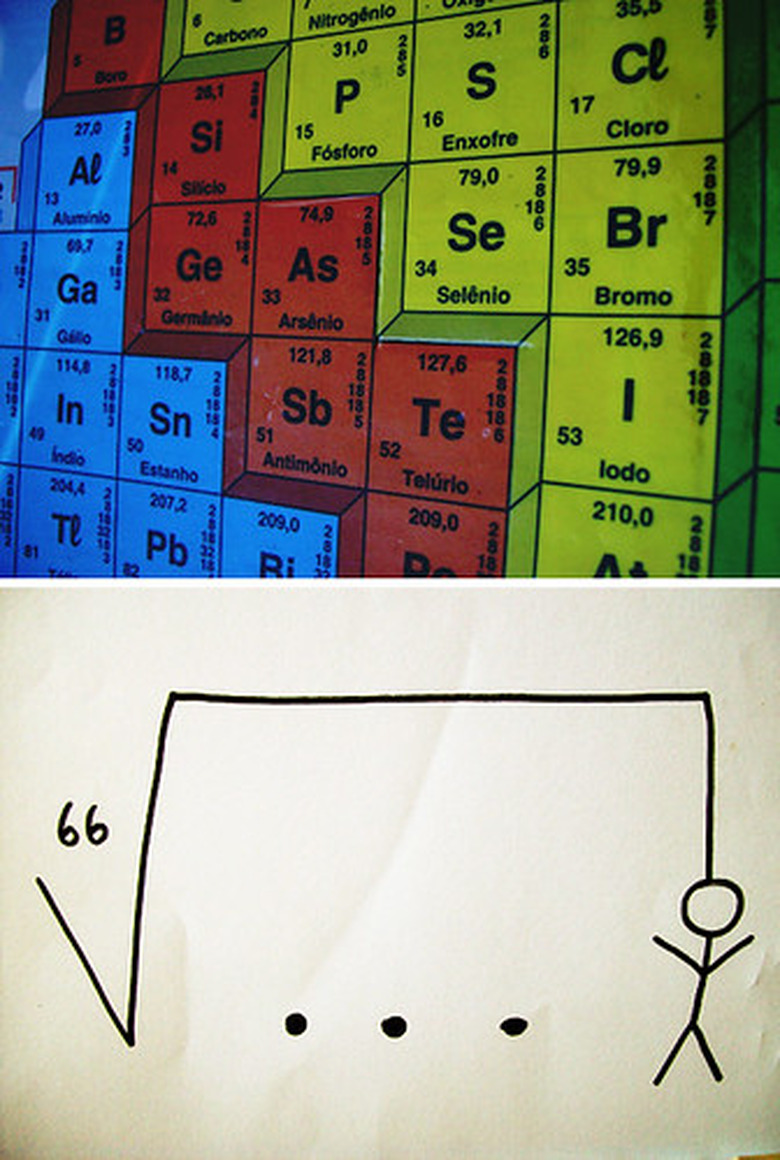Qualitative Chemical Analysis
There are plenty of times when a person doesn't know what a substance is, especially if the substance looks, smells or behaves differently from anything else to which the person has been exposed previously. In these cases, it may be desirable to analyze what elements are in the substance. The primary means of this is through qualitative chemical analysis.
What Is Qualitative Chemical Analysis?
What Is Qualitative Chemical Analysis?
Qualitative chemical analysis is a method of analyzing organic and inorganic substances. It is a branch of chemistry that identifies compounds and elements. It does not measure the amount of the substance, but rather looks at factors such as color, smell, texture, atomic structure and the ability of the substance to conduct electricity or reflect light.
Directionality
Directionality
Qualitative chemical analysis always works from large to small, meaning that the biggest parts of the sample are identified first. The next biggest parts then are identified, and the identification of constituents then continues until the parts being identified are in elemental form.
Methods and Tools
Methods and Tools
For simple qualitative analysis, no tools may be necessary, since things like color and smell can be observed without mechanical assistance. Other preliminary analysis might include the use of simple tools like cotton swabs, a flame or a heat source like a Bunsen burner. More sophisticated methods and tools include spectroscopy, fluorescence tests, chromatography, polarography and electrophoresis. In general, the smaller the part being analyzed the more sophisticated equipment is needed, since some elemental properties such as atomic structure cannot be observed otherwise.
Applications
Applications
Qualitative chemical analysis has its main application in the medical and criminology fields. Medical personnel may use qualitative chemical analysis in tests and procedures to treat and diagnose patients. Forensic scientists may use qualitative chemical analysis to identify substances left at crime scenes, which can be vital in convicting criminals. Qualitative chemical analysis also may be used in the home. For instance, a person might tell the difference between margarine and butter in how quickly they melt.
Supplemental Analysis
Supplemental Analysis
Qualitative chemical analysis can be seen as a starting point for complete analysis of a substance, since it doesn't measure anything that can be described in numbers (e.g., mass). People also may want to know the exact amount of the substance being identified. In this case, a supplemental analysis method, quantitative chemical analysis, can be used.
Cite This Article
MLA
Thibodeaux, Wanda. "Qualitative Chemical Analysis" sciencing.com, https://www.sciencing.com/qualitative-chemical-analysis-5584795/. 24 April 2017.
APA
Thibodeaux, Wanda. (2017, April 24). Qualitative Chemical Analysis. sciencing.com. Retrieved from https://www.sciencing.com/qualitative-chemical-analysis-5584795/
Chicago
Thibodeaux, Wanda. Qualitative Chemical Analysis last modified August 30, 2022. https://www.sciencing.com/qualitative-chemical-analysis-5584795/
